I sent David at Earth Island Books an anarchist flag image, just a ‘flat’ image, and I asked David to try make the flag look as though it was ‘flying in the wind’ across the whole width of the book.
This I assumed would not happen as I had no idea that it could be done.
I was overwhelmed with the result that David and his team returned to me.
Glorious work.
The ‘flag’ can be seen (the two books next to each other) in the photograph ABOVE
PURCHASE THE SOFTCOVER EDITION OF NOT JUST BITS OF PAPER DIRECT FROM EARTH ISLAND HERE
PURCHASE THE HARDCOVER EDITION OF NOT JUST BITS OF PAPER DIRECT FROM EARTH ISLAND HERE
A page photograph for illustration only
The quality of the images are better in the book than my photograph
It has now been ten years since this book was published. This book in its original 2015 black and white edition sold over eight hundred copies. Greg and myself would both like to thank all the buyers of those books. No money has ever been made by either of us during the publishing life of that 2015 book. We were not interested in any payments; we were interested in publishing an excellent book at a cheap price; and we still are!
This revised tenth year anniversary edition of the book has an extra fifty pages of posters, flyers and text to look at and read.
Also within those extra pages are three great new chapters written by Tim Voss and Mick ‘Skinner’ Baker about their respective teenage punk bands, Necro and Virus V1, and a chapter from Alistair Livingston concerning the album ‘Let The Tribe Increase’ by the Mob.
Greg and myself hope that you enjoy this revised edition of this book.
Greg and myself would also like to dedicate this anthology of recollections and memories to the heroes of the anarcho-punk movement: the pamphleteers, the flyer and poster artists, the squatters, the young punks who put gigs on in the local village hall, and also the young punks who formed bands that no one ever heard of outside their local scenes. You were all a small part of the movement that inspired so many.
Thank you to all those persons unknown.
A series of recollections, memories, imagined dreams perhaps from the collective memories of those who lived through the punk and anarcho-punk years. Tales recalled of times past and a glorious tribute to the bands and the crowds who made the eighties so special for so many of us.
A page photograph for illustration only
The quality of the images are better in the book than my photograph
“Definitely the best book I’ve seen on the anarcho-punk scene. It was so good to read all those personal memories of gigs, fanzines and friendships forged in an era when we were all so desperate for change. This beautiful book tells part of that story.”
Colin ‘Colsk’ Latter – Flux of Pink Indians
“In the eighties the world was seen in black and white, but this book’s tenth year anniversary edition is presented in full colour and opens a world of possibilities. It brings back all sorts of memories of gigs I was at, but also tinged with sadness for the gigs that I missed!”
Sean Forbes – (ex) All The Madmen Records / Rough Trade shop W11
“I know the book is called “Not Just Bits Of Paper” but there’s a whole lot of bits of paper in here that I had a hand in creating, and I’m extremely glad that Mickey ‘Penguin’ and Greg have gone to so much trouble to hunt the bits of paper down and look after it all. This stuff changed my life and continues to do so. Thanks so much for helping keep it all together”.
Mark Wilson – The Mob
“We have our own words, scrawled on bits of paper smudged with some grimy hope. Angry chords waver out from the broken cassette-players – and every now and again a curious prisoner comes out for a look and never returns.”
Tony Drayton – Ripped & Torn / Kill Your Pet Puppy fanzines
A page photograph for illustration only
The quality of the images are better in the book than my photograph
CONTRIBUTORS
Gregory Bull – Ted Curtis – Alastair ‘Gords’ Gordon – Graham Burnett – Chris Print – Rich Cross – Mathew Worley – Louise Knight – Peck – Paul Platypus – Bob Short – Tony D – Nick Hydra – Chris Butler – Mark Davess – Mickey ‘Penguin’ – Aaron Paul – Sean Smith – Chris Low – Triston ‘Stringy’ Carter – Trevor Speed – Tim Voss – Mick ‘Skinner’ Baker – Alistair Livingston
A page photograph for illustration only
The quality of the images are better in the book than my photograph
A REVIEW: Alan Rider’s Outside Left Culture blog – Thank you Alan
Back in the early to mid-eighties, Britain was a musical melting pot, with independent acts and musical cults of all shades existing not-particularly-peacefully side by side. The charts were a melange of dreadful disco, former punk acts turned pop stars, the latest music press fads, and dinosaur pre-punk acts that refused to die (Queen etc).
Outside of all of that, though, there was a genuine DIY underground, far from the commercial considerations of the music ‘biz’. That split into the electronic and experimental industrial underground headed up by Throbbing Gristle/PTV, and the Anarchist punk underground spearheaded by Crass and Crass Records. There was some overlap at the edges, but these two scenes existed largely discrete from each other, and a million miles from the regular pop and rock worlds, even down to the choice of venues.
The chosen medium was cassette and short run singles and albums with DIY sleeves, promoted by word of mouth and via the myriad of self-produced fanzines and flyers and distributed through a network of small record shops, anarchist and left-wing bookshops, and DIY mail order outlets run by dedicated individuals across the country and internationally. It was the true realisation of the original promise of punk that had been let go of by the record contract chasing first wave of punk, but picked up and embraced by passionately committed and principled individuals operating on shoestring budgets out of squats and back rooms.
There was a thriving alternative gig circuit too. No commercial promoter would touch the likes of Crass, Blood and Roses, The Mob, or Flux of Pink Indians as their scrappily recorded and unconventional noises were not money spinners and both records and gigs often sported ‘pay no more than..’ tags to keep prices low and affordable to the (usually broke) core audience. Venues were sympathetic Student Unions, schools and halls in out of the way places, along with squats and anarchist centres, especially London’s Centro Iberico on the Harrow Road, which served as the de facto epicentre for the movement, along with Crass’s Dial House HQ in Epping.
It is this scene that forms the focus for ‘Bits of Paper’, with those reproduced bits being the plethora of gig posters, flyers and printed statements that gave the scene its distinctive identity.
Although the Anarcho-Punk visual style is often seen as the stencilled lettering beloved of Crass, or the scratchy, apocalyptic, biro drawings that adorned many sleeves and posters, there is a far greater artistic variety on show here. Some posters are reminiscent of the swirly, hippy doodlings of Oz magazine or Hawkwind. Others are skilful collages and line drawings. Yet others are clumsily naïve posters produced by schoolkid punks. The range of bands featured on the posters illustrates a surprising variety of musical styles, from the Goth sounds of the Sex Gang Children and Southern Death Cult, through Blood and Roses, The Apostles, The Mob, Blyth Power and, of course, scene leaders Crass, Poison Girls, and Flux of Pink Indians.
Artwork is frequently adorned with statements; “Ain’t No Freedom In America”, “Smash The System Now – Please” (very polite, that!), “Our Minds Are Strong”. Centro Iberico is also omnipresent as the venue of choice for many. The scene wasn’t solely London based. Bristol, Nottingham, Ipswich, Oldham, and Coventry, all feature. The Mob and Blood and Roses seemed to play absolutely everywhere though.
This tenth anniversary edition is produced in large format full colour and at over 270 pages long, both is fantastic value for money and allows you to appreciate the detail that a smaller monochrome format would lose. Aside from the reproduced artworks, much of which would be lost forever without books like this to capture them, the real gems here are the eyewitness testimony and stories from those involved, telling of gruelling long-distance trips on coaches and trains, bunking the tube and hitching rides where they could in order to get to gigs held in obscure venues.
Those experiences often recalled mindless violence from marauding skinheads, tales of kindness and insanity in equal measure, police harassment, and the lives of schoolboy anarchist punks from across the country. In a pre-internet age, networks were postal, fuelled by rubbing soap bars on postage stamps so that the franking mark could be cleaned off and the stamp re-used over and over (no QR codes then!), and meeting up with like-minded individuals at gigs and squats.
These formative experiences had a far greater impact than the music. As Penny Rimbaud, founder of Crass would later admit, the experience of being a member of Crass was awful, with violence directed at them by local skinheads at gigs, police hostility, constant lack of money, and long trips in rickety vans to the back of beyond to play for kids who would otherwise never be able to see them play live. I myself saw them a few times at Birmingham’s Digbeth Civic Hall and can honestly say that it was one of the most influential events of my life, not because of the music (of which I have the dimmest of recollections), but because it showed me that anyone could do something for themselves
The book is very affordable (just £18) and is an excellent and very readable record of those times that avoids mythologising and presents the grubby and unvarnished reality rather than dons the rose tinted spectacles, as is all too common with such publications.
A page photograph for illustration only
The quality of the images are better in the book than my photograph
A REVIEW: John Serpico’s The Art Of Exmouth blog – Thank you John
Some might find it hard to believe and others impossible to comprehend but there was a time when the Internet didn’t exist. A time when there was no Facebook, no X, Instagram or even MySpace. ‘But how did you message anyone?’ all the children ask in wide-eyed wonderment ‘Or did you not message anyone ever and just sit instead around the piano of an evening singing songs?’
‘Well, we had landline telephones and there were these things called ‘pens’ that you could write a letter with and send to people by something called ‘post’.
‘Have you heard of it?’
But by this time the attention of all the children has wandered so you instead open up your copy of Not Just Bits Of Paper and cast your mind back to slightly more interesting times when communication required effort and was a means to an end rather than an end in itself
Not Just Bits Of Paper is a portal into a world now diminished, a world where the importance of specific bits of paper cannot be overstated. Not that these bits of paper had any intrinsic purpose beyond the sole reason they were produced for – that being to advertise and publicise events – though paradoxically, without it ever being stated or even considered they also represented nothing less than a vision.
The bits of paper we’re talking about here are the flyers and posters created to announce upcoming concerts of the more ‘earthy’ punk rock type prevalent throughout much of the 1980s. Black-and-white, made with scissors, glue, pens, Letraset and found images. Utilising the ‘cut’n’paste’ method rather than desk-top publishing, then photocopied, fly-posted, stuck up in record shops, given out by hand and sent out by post enclosed with fanzines and cassette tapes purchased from various mail-order lists.
This was the way we communicated before the advent of the Internet and social media. Slow, time-consuming, sometimes wearisome but effective.
Many of these flyers and posters could be really basic in design and layout whilst others could be veritable mini works of art. All, however, whatever the quality of them were meant to be throwaway. Ephemeral. To serve their one purpose then binned, which is what most people tended to do with them once the publicised event had passed. Very few people thought of saving them and those who did so, saved them essentially for the sake of it. Not for having an eye on one day them being collectible or of any possible future monetary value to anyone. They saved them without thinking and for no reason but saved them – thankfully – they did.
Unlike nowadays, back then hardly anyone took photographs at concerts, so the flyers and posters advertising these events are the only physical evidence of a lot of them ever happening. For sure, they’re held in memories, but memories tend to fade so the flyers and posters compensate, prod and serve to remind. Just as importantly if not more so, however, these flyers and posters – these bits of paper – acted at the time as seeds blown on the wind, as conduits for messages. Weaving gossamer-thin threads between not only friends and neighbours living in the same city, town or even village but between strangers and people of like-mind living in cities throughout the whole country.
It was subliminal. Unspoken. Like tiny beacons being lit on top of hills or flares being shot up into the night sky. These bits of paper acted as signals announcing an alternative to mainstream entertainment, mainstream news and even mainstream values. Announcing a vision. They were the corpuscles in the bloodstream of an underground punk culture that sought legitimacy not through commercial success but through the instigation of consciousness raising, further creativity and political action. Just as fanzines and concerts themselves were deemed to be, these bits of paper were the very lifeblood of that punk culture.
Co-edited by Greg Bull and Mickey ‘Penguin’, Not Just Bits Of Paper collates a wide selection of flyers, posters and handouts from the anarcho punk era of the 1980s and for posterity lays them out and presents them in all their ragged, torn and tattered glory. As to be expected, Crass are heavily represented alongside The Mob, Flux Of Pink Indians, Antisect, Conflict, Poison Girls, Chumbawamba plus many more others.
Thoughts are collected also in essays of various length and size written by some of those who were there at the time. Noticeably and interestingly they’re all written from the audience point of view rather than from any band members and in doing so adds a whole other dimension to the book. Quality-wise these essays differ and again that’s only to be expected but in among them are some very well-written pieces indeed, most noticeably from Ted Curtis, Rich Cross, Tristan ‘Stringy’ Carter and in particular one by Tim Voss.
Not Just Bits Of Paper documents a period in time that is unlikely to be ever repeated again. A period in time that impacted mightily upon a significant number of people to such an extent that their lives were inexorably altered – some say ‘ruined’ – for the better. A period in time that though now long gone still resonates, and that under the noise and technology-driven haste of modern day living still echoes.
A page photograph for illustration only
The quality of the images are better in the book than my photograph
A REVIEW: Steve Cotton’s The Art Of The State blog – Thank you Steve
I used to have a great big box of paper, full of music magazine cuttings, letter exchanges with bands, fanzines, flyers, it was all in there. But then one day during a house move it made its way to the tip. I miss it all to this day.
Some others were not so careless as me. They kept all these bits of paper, knowing that they are things that unlock memories, that they changed minds that are still changed from the mainstream view even today.
They provide the backbone of this new book in which Greg Bull and Mickey ‘Penguin’ collate these fragments and coupled with testimonies from the time create a view into the personal stories behind punk.
What I love about punk is the way that you can be part of it all and this book perfectly demonstrates this.
Put together by those who had this connection. There are stories, pictures and thoughts that to others could seem trivial, but to those involved were often life changing.
The stories in here explain why.
Pilgrimages to record labels such as All The Madmen, seeing a band like Antisect as your first gig, hand crafted flyers, this book is full of fascinating personal insights that have previously gone unreported and were in danger of being lost.
They provide little triggers in the mind about your own experiences. I even found an advert for a gig for my old band that I’d never seen before. Eighties anarcho-punk was always about much more than the bands themselves.
A page photograph for illustration only
The quality of the images are better in the book than my photograph
A page photograph for illustration only
The quality of the images are better in the book than my photograph
Editors Mickey Penguin and Greg Bull vividly bring the UK anarcho-punk scene of the early 80s to life on the printed page with a collection of first hand accounts, posters, handouts and other ephemera. Earth Island has worked with the authors to give this book a ten year anniversary reboot with extra content and full colour treatment, which makes for a compelling read, says Nathan Brown.
The title Not Just Bits Of Paper could be taken to mean that the flyers and posters featured are more than just bits of paper: they are a historical record of counterculture. It could also be taken to mean that you don’t just get the bits of paper, you get the stories behind them. This collection features contributions from participants in the early 80s anarcho-punk counter culture, providing context and emotion.
I’m somewhat wary of retrospectives and histories with society seeming to live in a state of rampant retromania and yearning for the “good old days” (forgetting the bad bits), but this volume has the bad with the good. Attacks by the police or skinheads on gigs, squats and individuals are relived. Most of them don’t end well, but our protagonists aren’t put off. “What doesn’t kill you makes you stronger” – in some ways, brutality dished out at punks in the 80s made many of us more resilient, or more determined to step in and help when others are being bullied (the current crop of bullies shouting at hotels being one example).
The way writers have described gigs they attended, the journeys to them, and what happened afterwards tangibly conveys the excitement, anticipation, exhilaration and occasional trepidation or fear. However, what is clear is that despite the downside, there was a lot of fun to be had. They ran the gauntlet but lived to tell the tale.
Big names from anarcho-punk feature, such as Crass, Conflict, Flux Of Pink Indians, The Mob and Antisect, but there is also a piece about GBH and images for gigs by Southern Death Cult or Inner City Unit. This reflects the reality of the time, which was that, for many, punk was not neatly segregated and regimented, with people sticking to one sub-genre.
Some of the bands featured are arguably as foundational to the ongoing development of punk rock counterculture as The Damned, The Clash and the Pistols. Their influence has reverberated down the generations, and today’s 16 year old arming themselves with a cheap guitar and two chords may draw on these bands more than the first wave. More provincial, lesser known, bands also pop up.
This book was previously available in black and white form a decade ago with 230 pages, but this updated and expanded full colour edition brings the subject matter alive. Some people used red as well as black ink to overlay images and text. Some folks must have found a stash of coloured paper next to the photocopier they were using in their library or workplace. Even items that were originally black and white (or grey and white!) seem vivid when you can see the yellowing of the paper with age. The full colour treatment also gave the editors the opportunity to recreate the anarcho-syndicalist red and back flag across the front and back cover.
You don’t just read a book like this. You peruse it. The graphical content deserves time so you can take it in properly. From hand drawn DIY posters for gigs in village halls to professional posters for large venues, there is always something to be gleaned. In general, the more DIY the item, the more likely there is to be polemic messaging alongside the details of the event, interesting collages or wicked humour (God Told Me To Do It’s send up of Ian Paisley being perhaps the best example).
I find the hand drawn or written items most interesting, considering the time and effort that went into these pieces, and the very direct connection with one individual’s handicraft. Tickets, lyric sheets and handouts that were stuffed into pockets at a gig, then stuffed in a box only to be resurrected years later, have tales to tell about what was going on in the early 80s. Not every image is explained, which is a good move. It leaves your imagination to fill in the blanks or ask rhetorical questions. Contemporary adverts for now sought after records or tapes are a bit like seeing photos of old friends. There are also a few photos.
A booklet Vi Subversa compiled to accompany the Poison Girls album Hex is included as a halftime interlude. Mickey Penguin’s tale of how he got involved with All The Madmen Records, then ended up at Southern Record Distribution, is a fascinating read. How he went from connecting with a song by The Mob to connecting with the band in real life is one of the great things about punk rock, and anarcho-punk in particular.
If anarcho-punk is your thing, then this makes a great companion to Ian Glasper’s The Day The Country Died, which told many of the bands’ stories. This gives you the wide eyed fan view. There is also a healthy crossover with David Insurrection’s recent study of Anarcho Punk sites in London.
For best results, I recommend you call in sick, turn off your mobile, disconnect the internet connection, put those old battered copies of Let The Tribe Increase, No Love Lost, Feeding Of The 5000, Penis Envy and Hex on the record player, stick the kettle on and lose yourself for a day in a fuzzy haze of unabashed anarcho reminiscence.
A page photograph for illustration only
The quality of the images are better in the book than my photograph
A REVIEW: Lee Powell – Vive Le Rock magazine – Thank you Lee.
A page photograph for illustration only
The quality of the images are better in the book than my photograph
Colin Latter ex vocalist of Flux of Pink Indians, a band heavily featured in this book, kindly donated this artwork for us, of which we are very grateful to him for.
Thank you Colin. Flux of Pink Indians will always remain a huge inspiration, going back so many decades to the early eighties.
Colin is now an established and respected artist, with some wonderful original artworks on show on his personal Facebook page (search for Colsk Latter) and also on his Instagram page (search for studio_latter).
Please go and visit both of those pages that Colin moderates. There is some truly remarkable art on show.
A page photograph for illustration only
The quality of the images are better in the book than my photograph
A page photograph for illustration only
The quality of the images are better in the book than my photograph
A page photograph for illustration only
The quality of the images are better in the book than my photograph
A page photograph for illustration only
The quality of the images are better in the book than my photograph
A page photograph for illustration only
The quality of the images are better in the book than my photograph
A page photograph for illustration only
The quality of the images are better in the book than my photograph
A page photograph for illustration only
The quality of the images are better in the book than my photograph
A page photograph for illustration only
The quality of the images are better in the book than my photograph
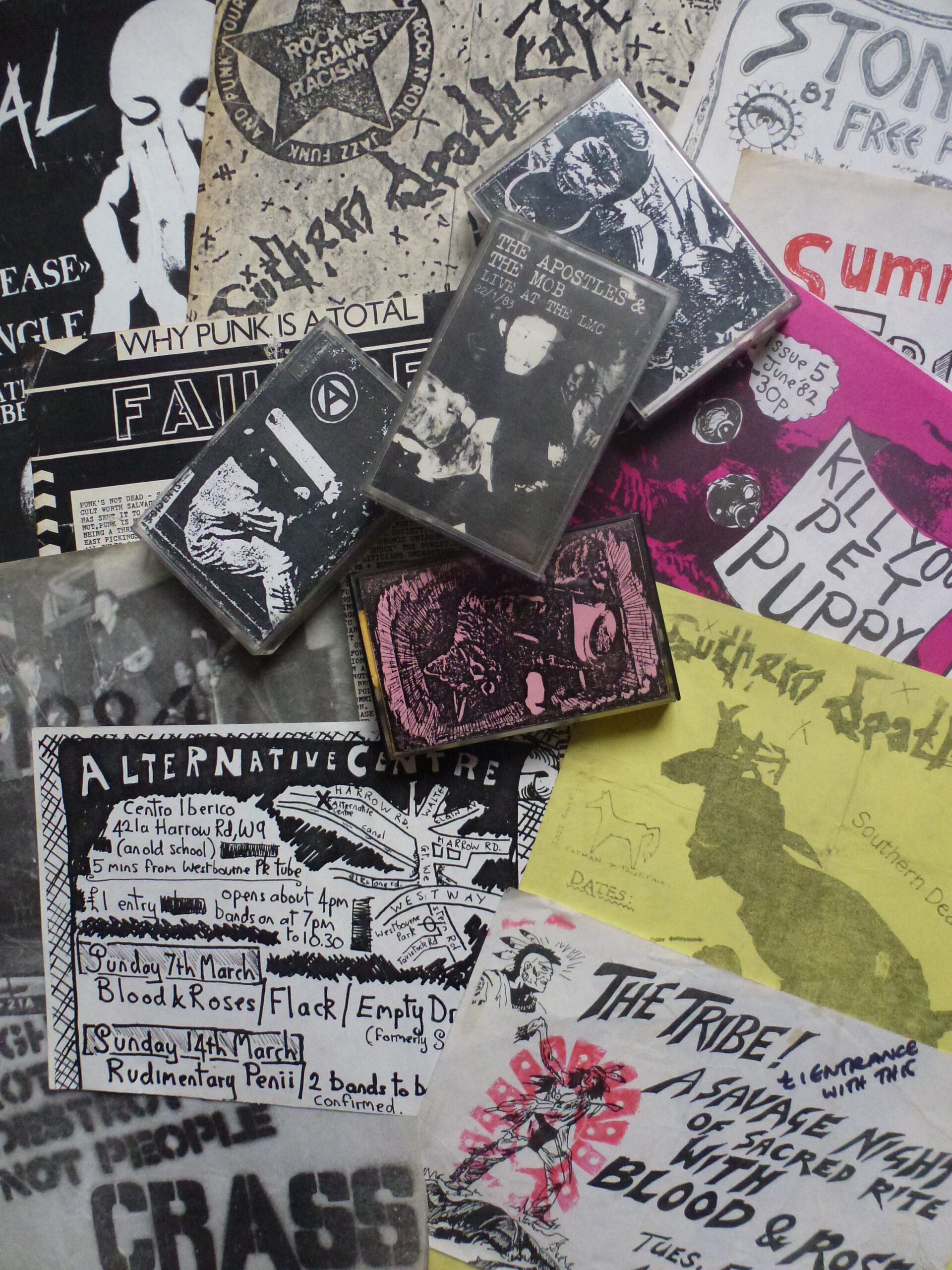
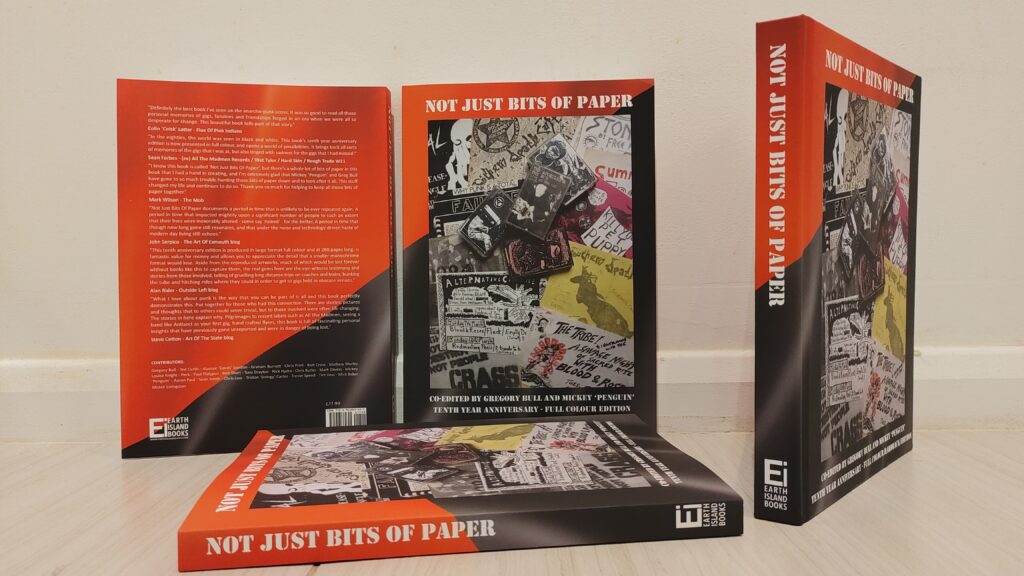
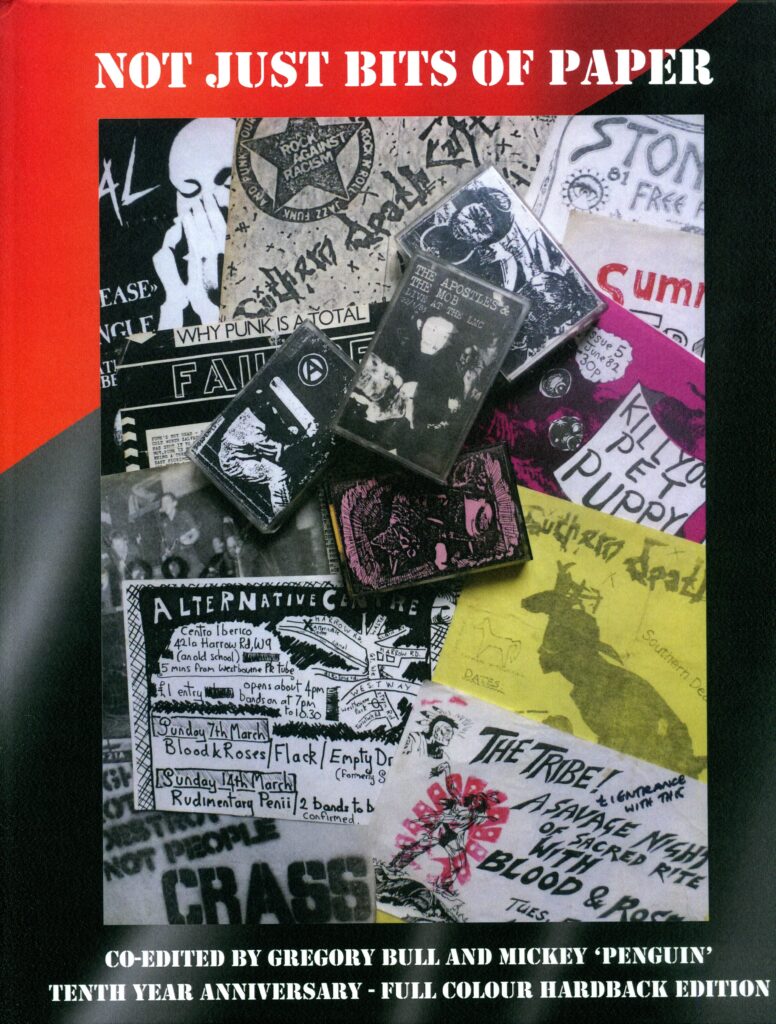
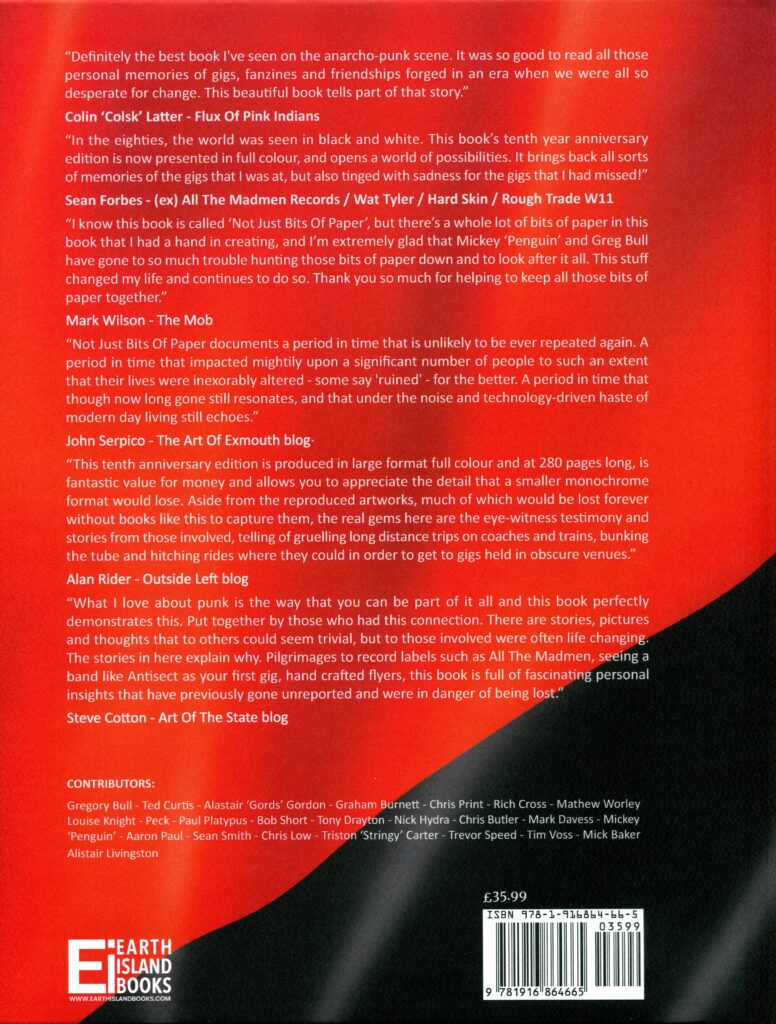
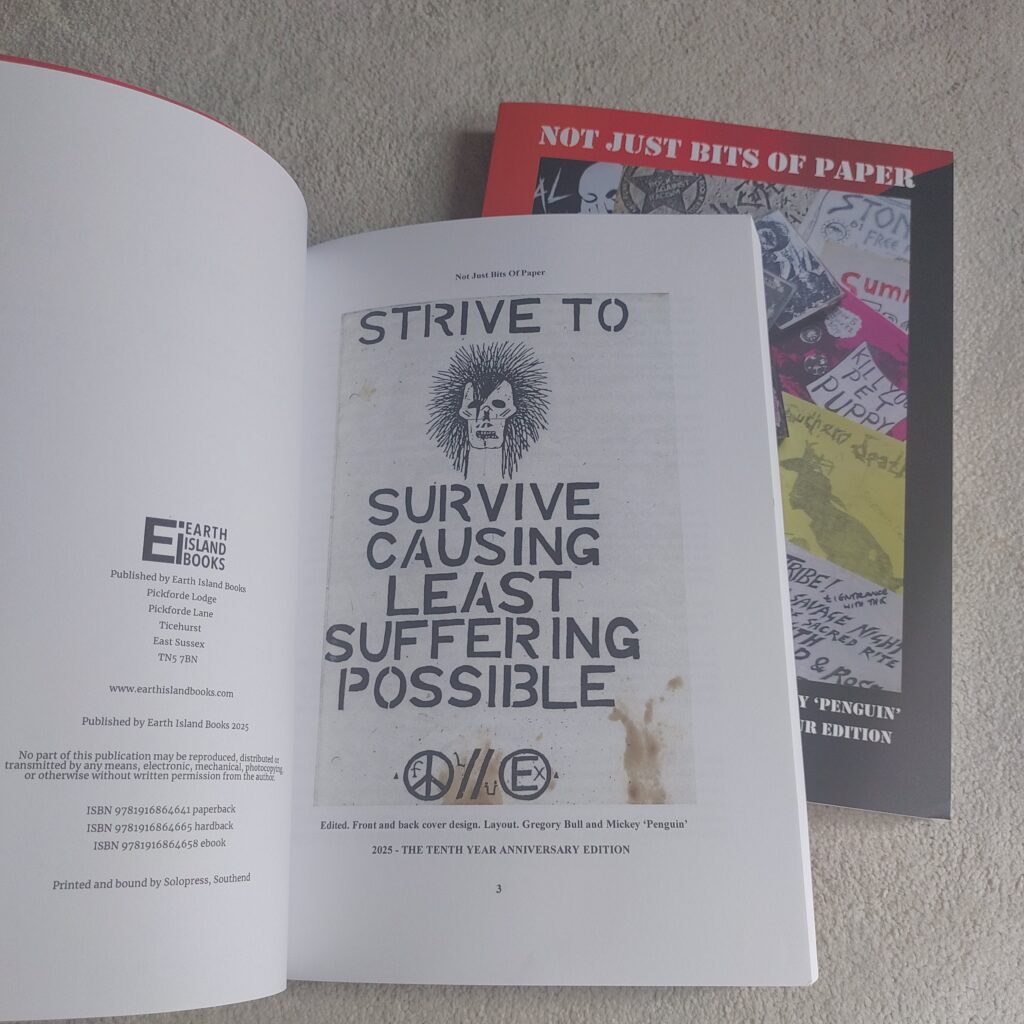
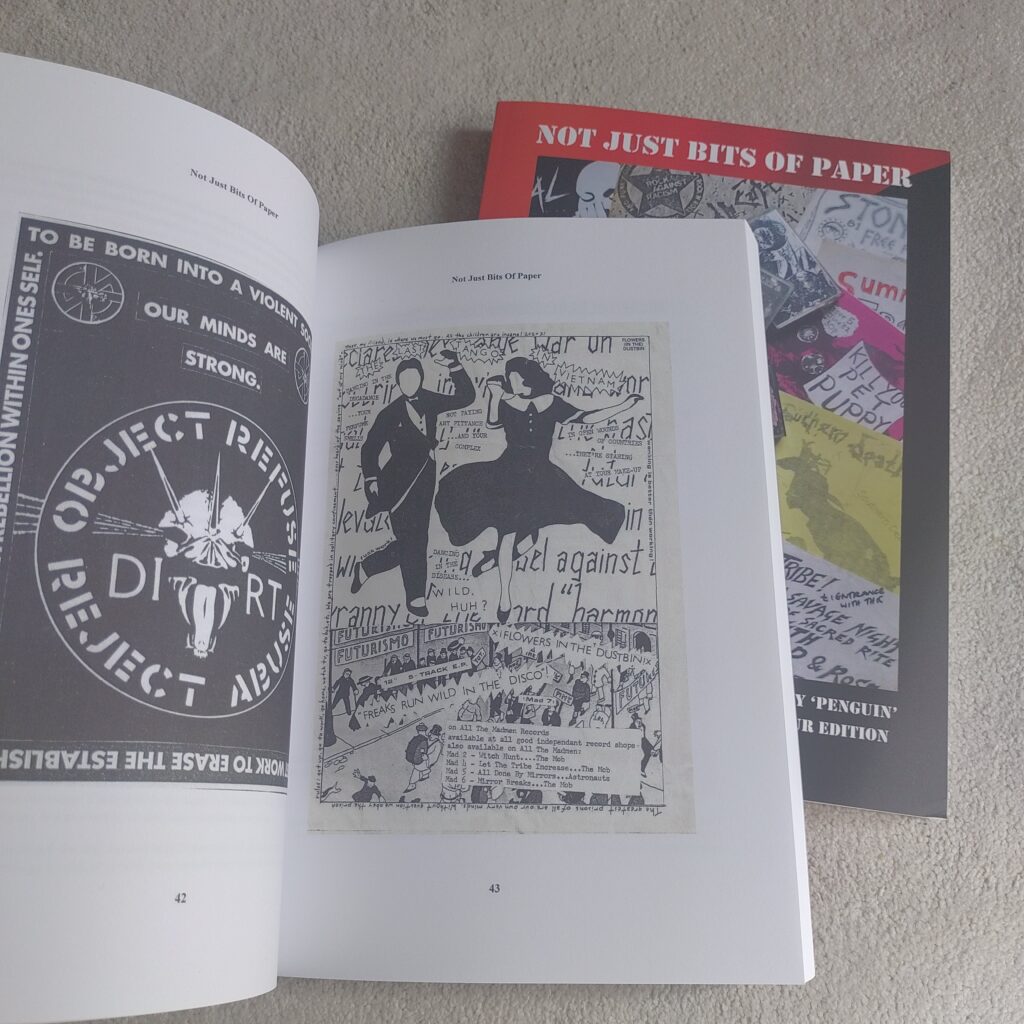
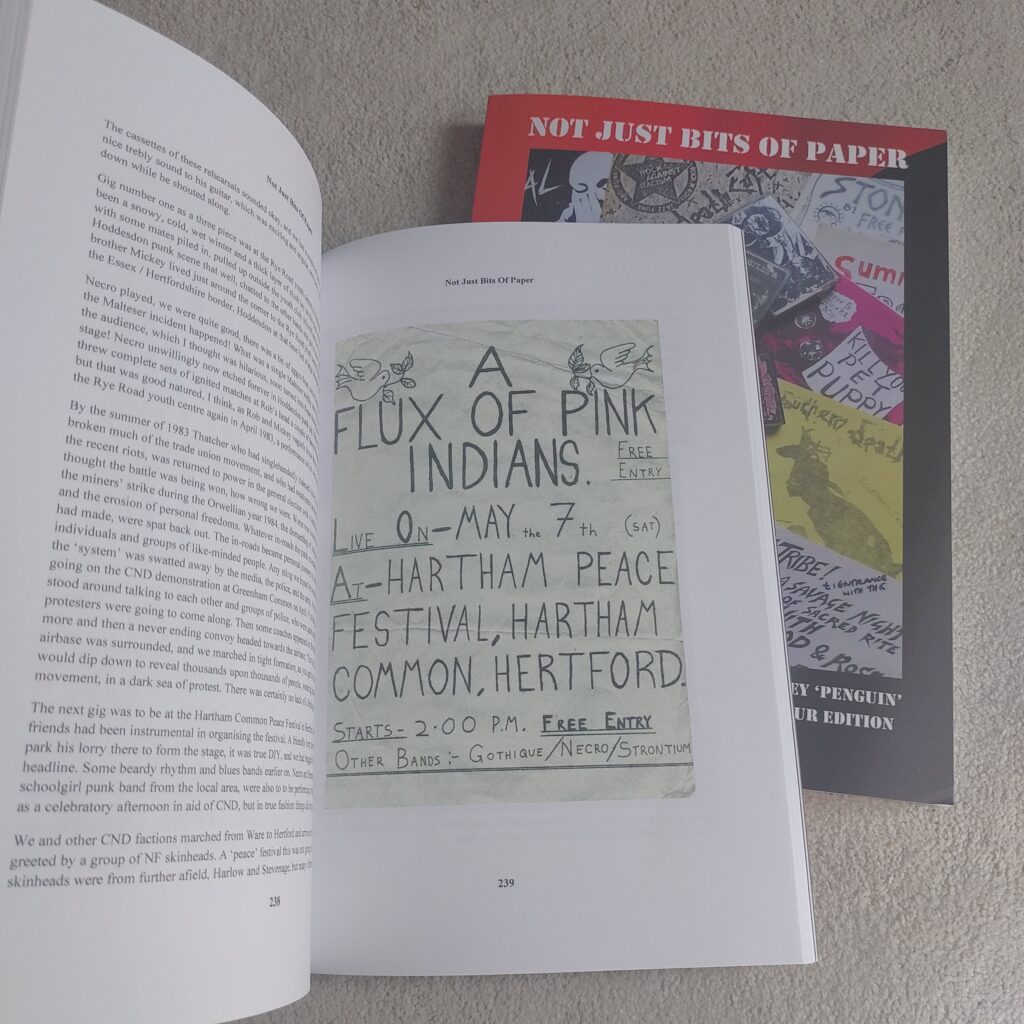
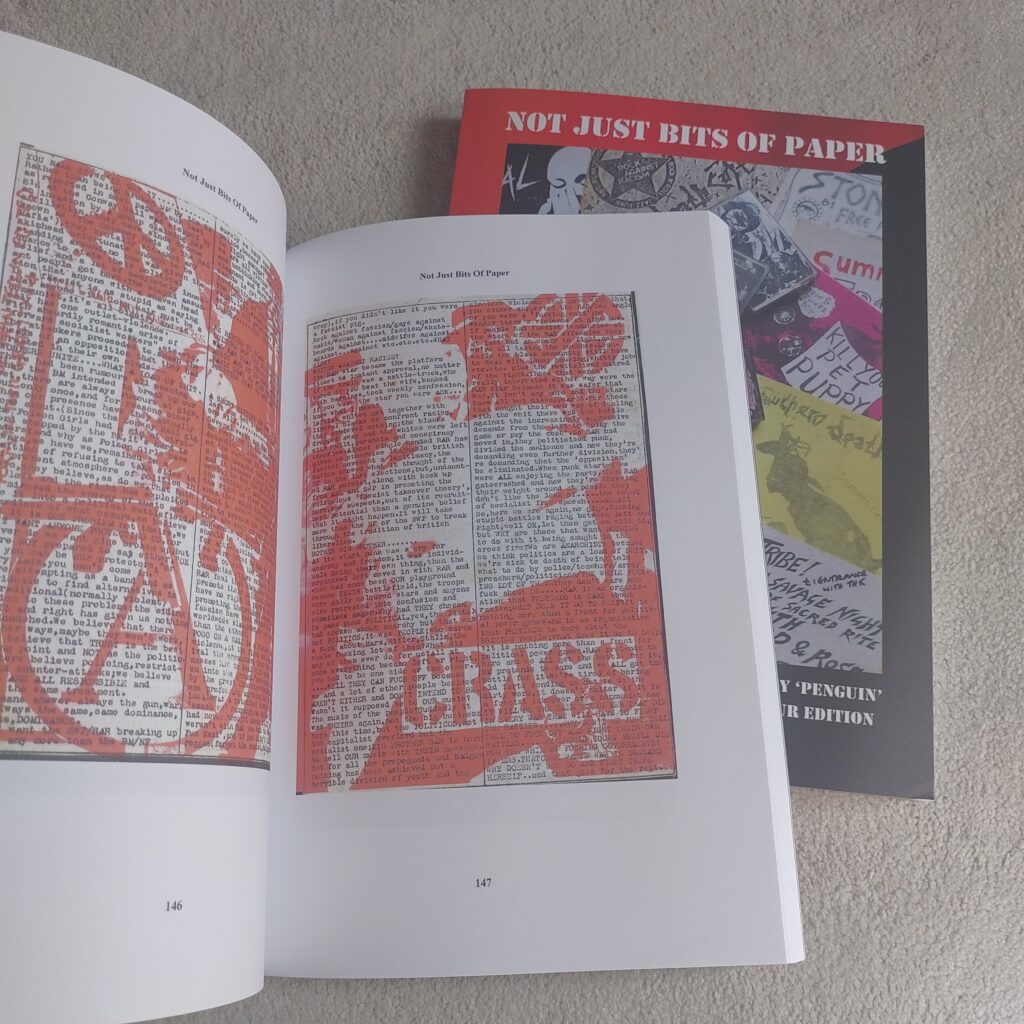
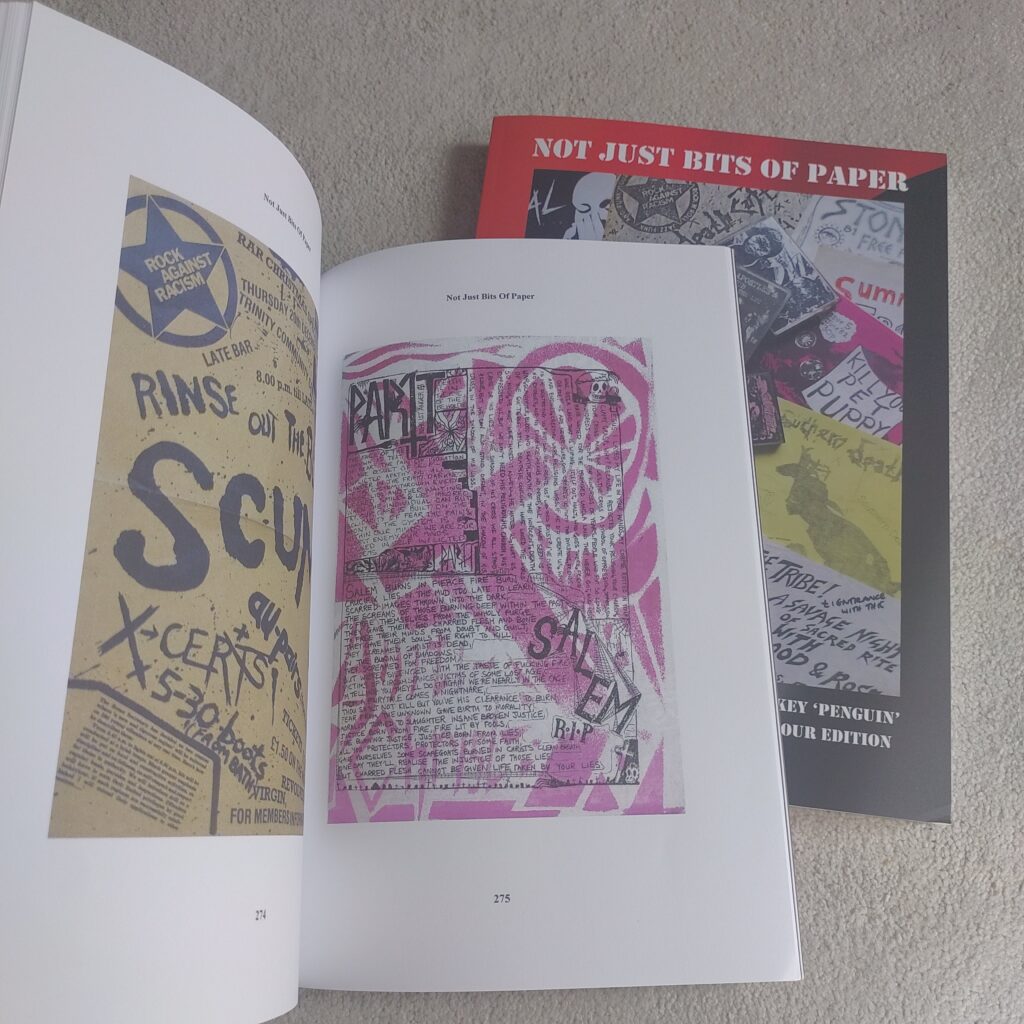
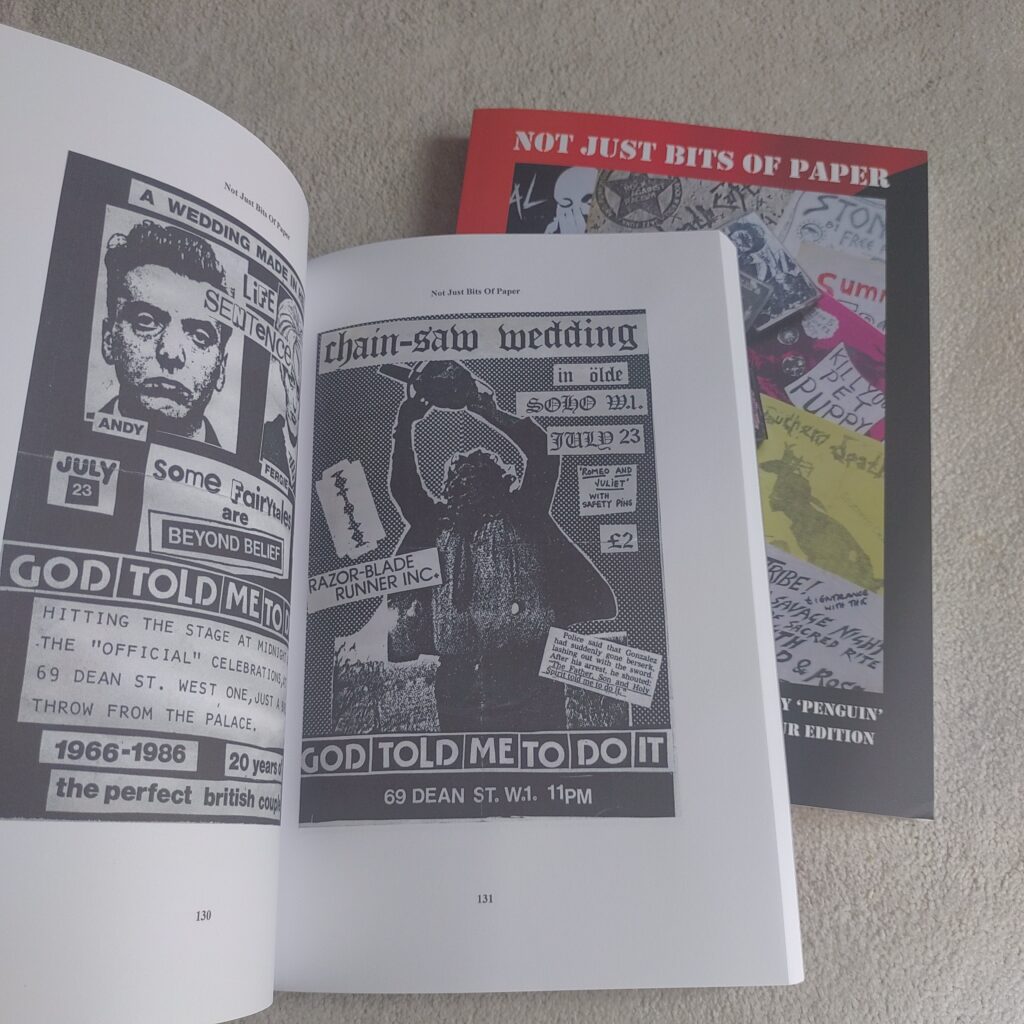
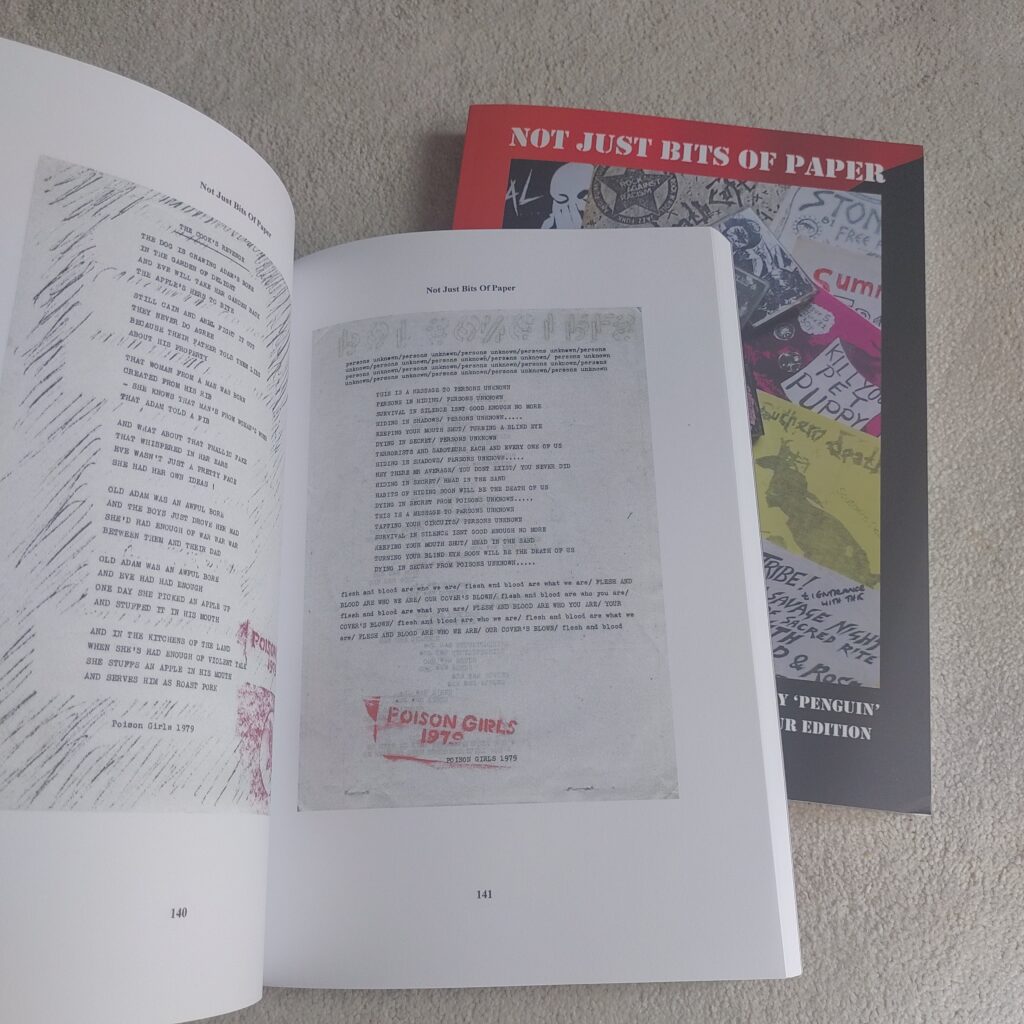
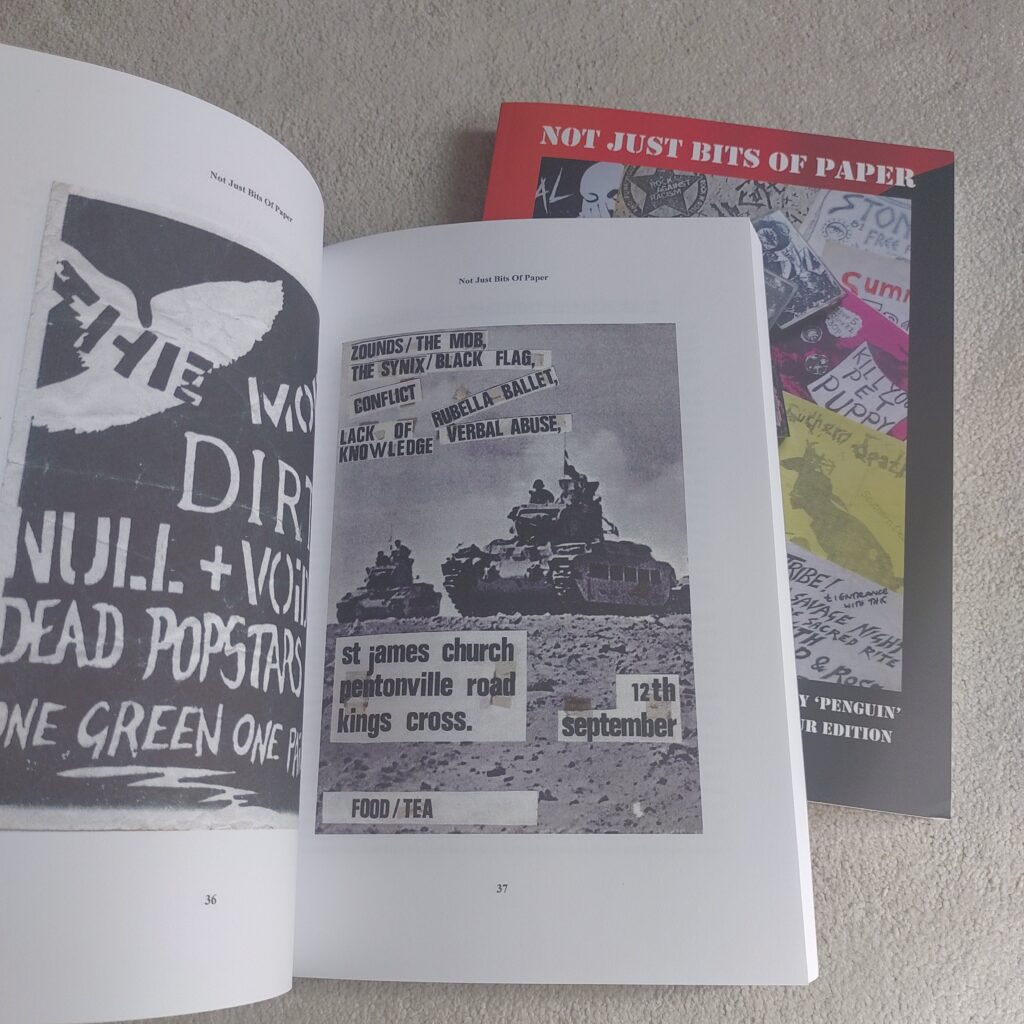
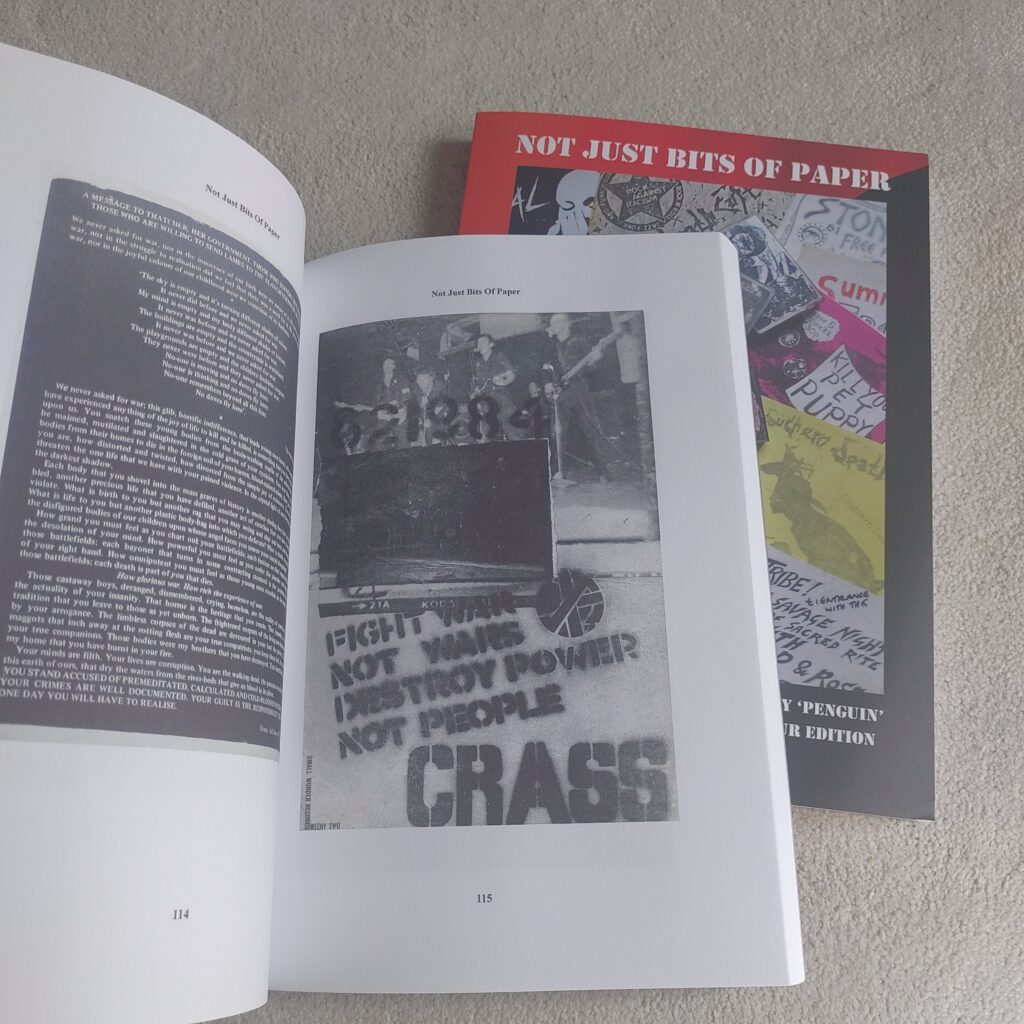
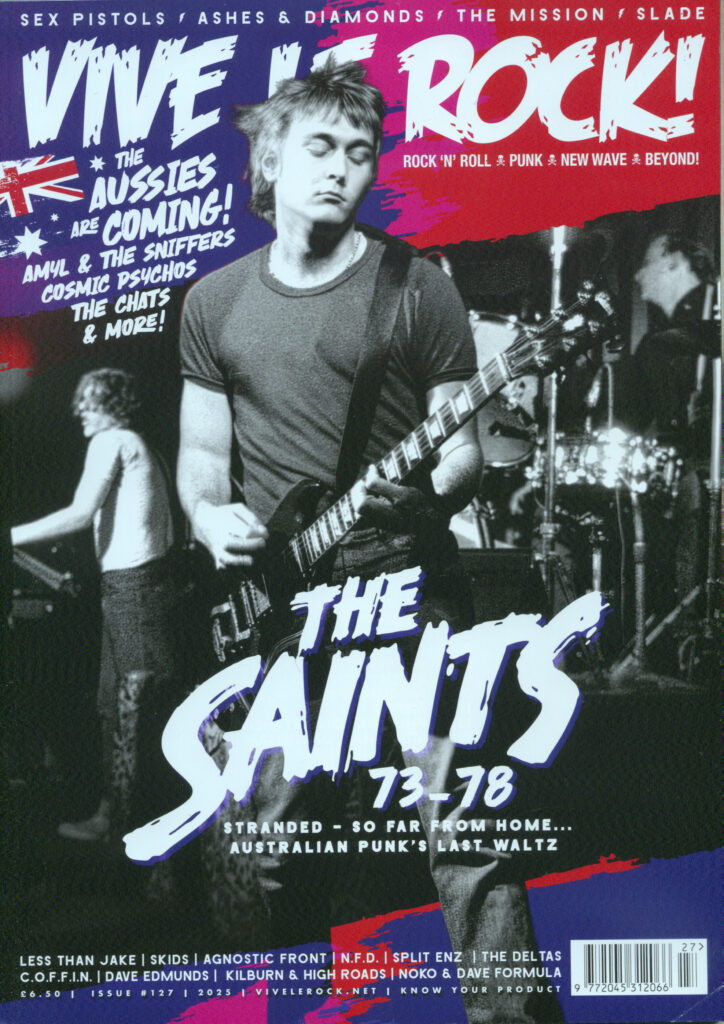
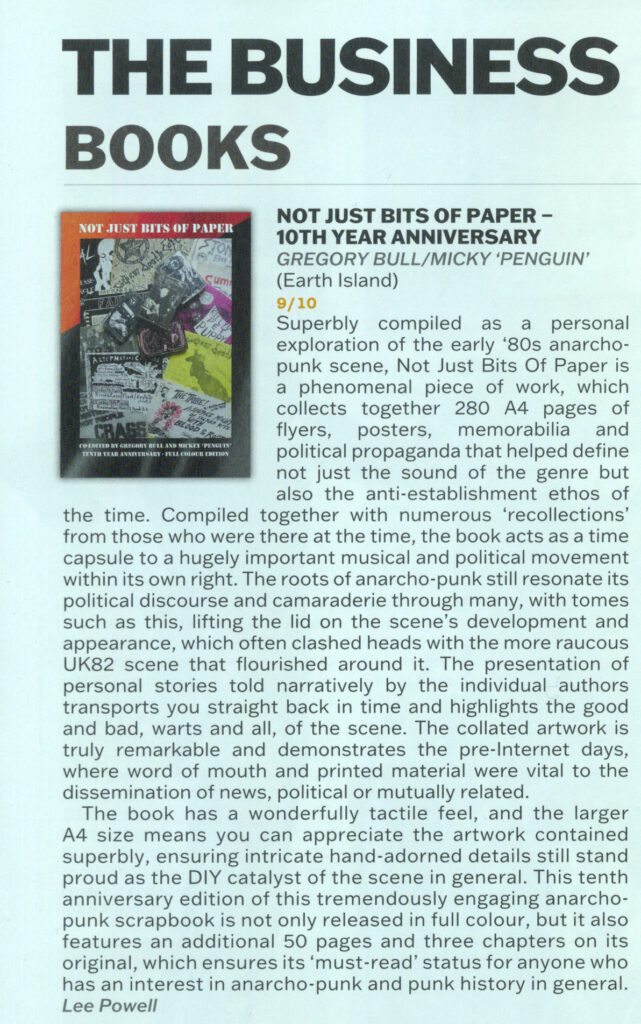
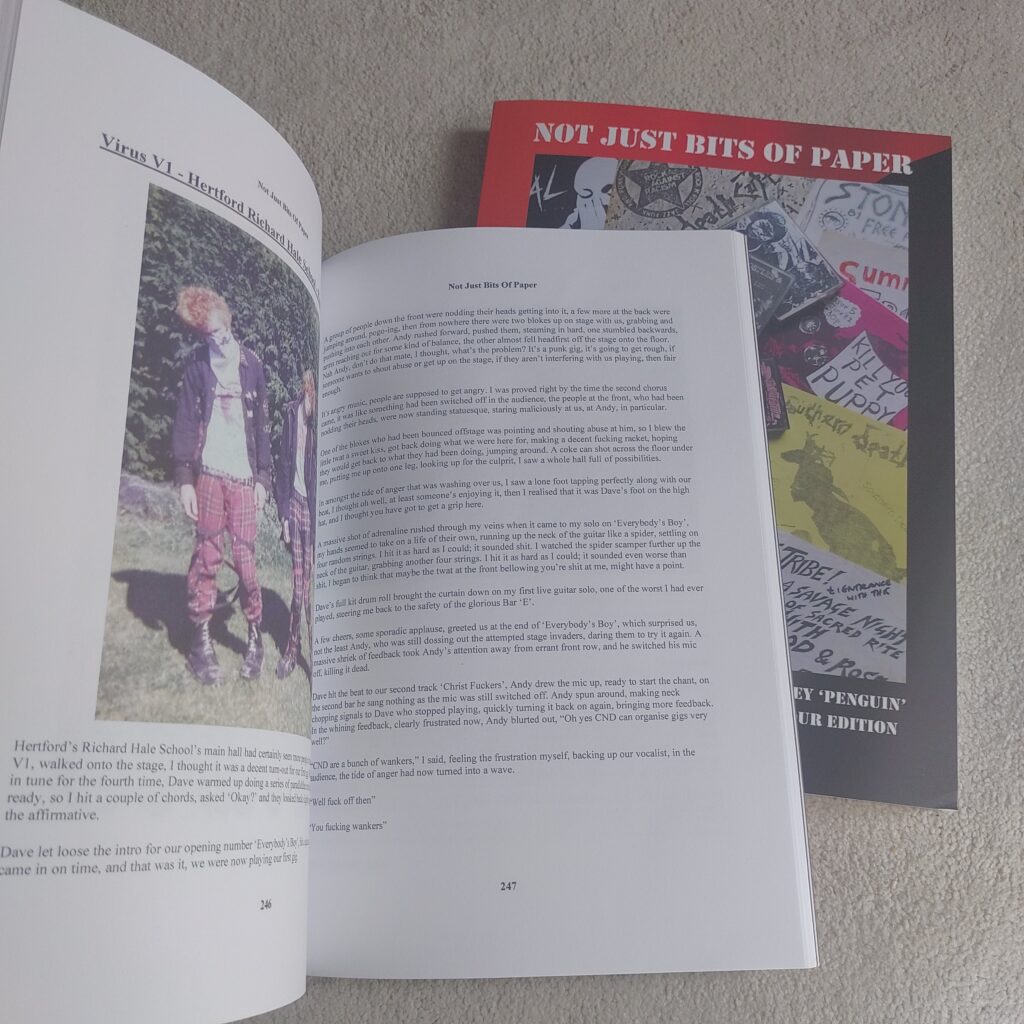
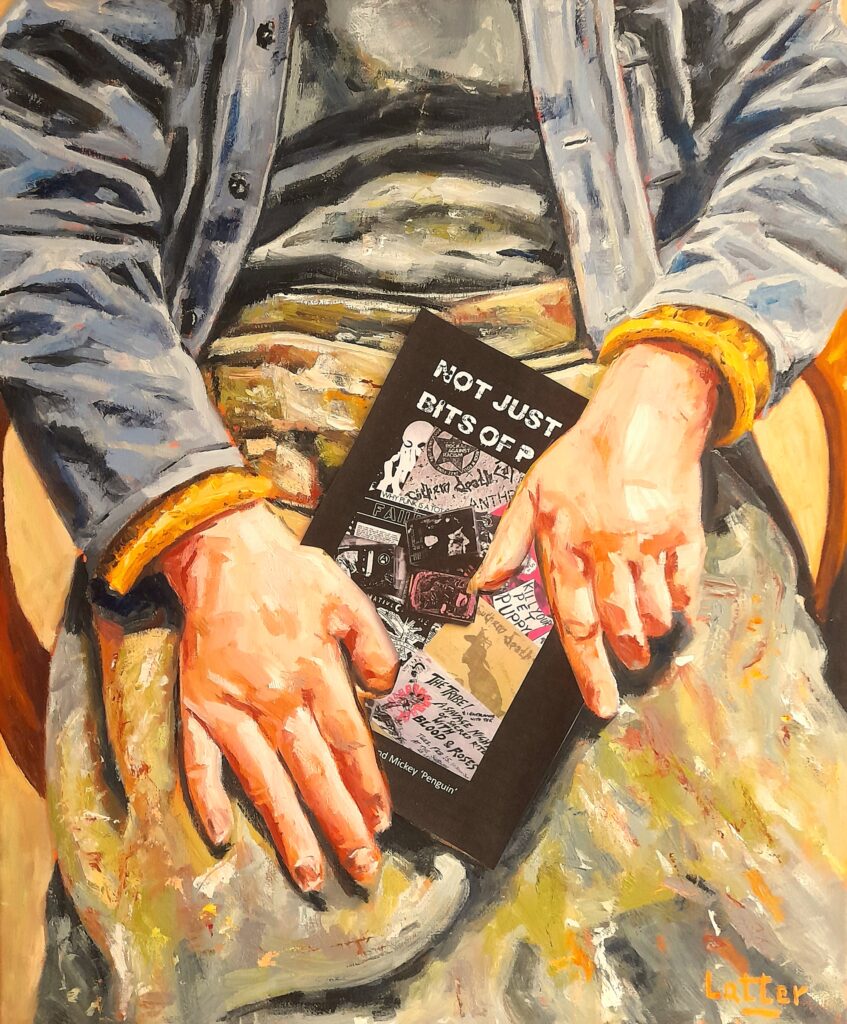
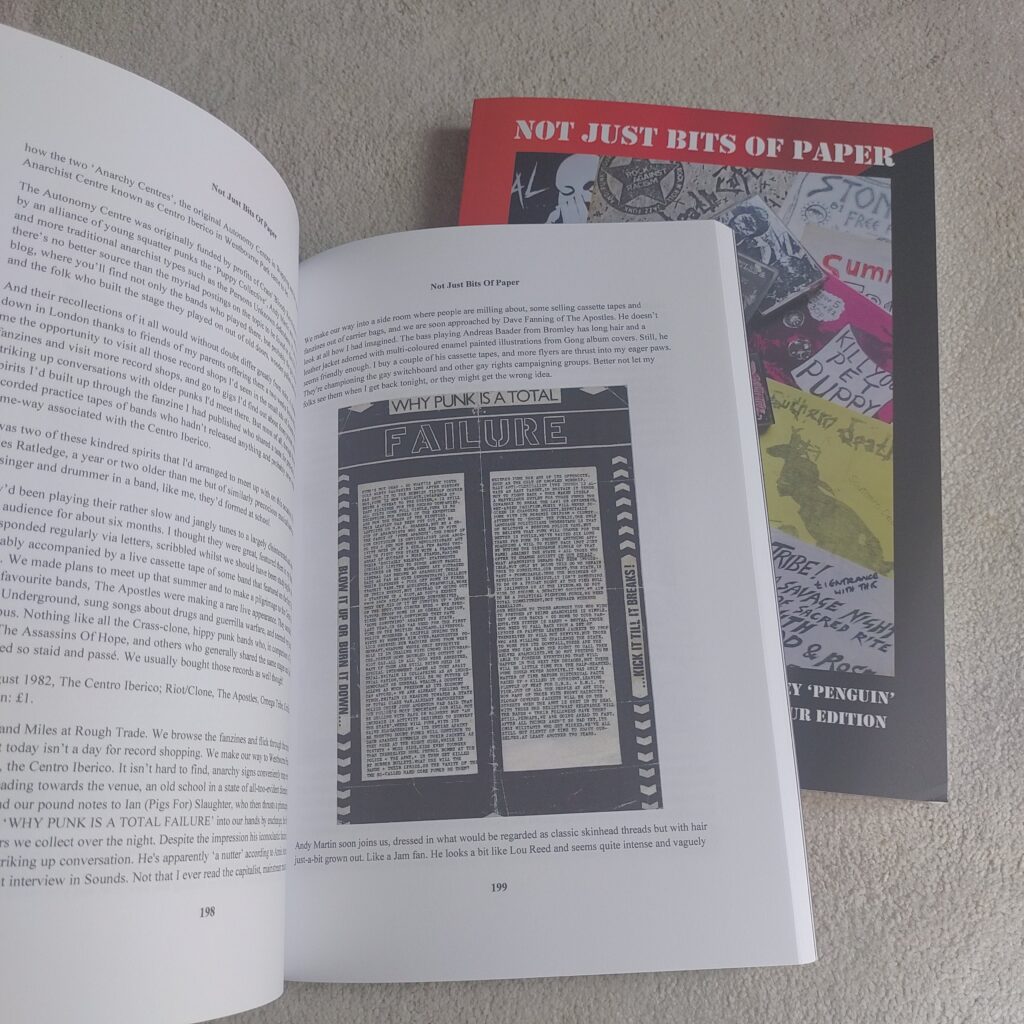
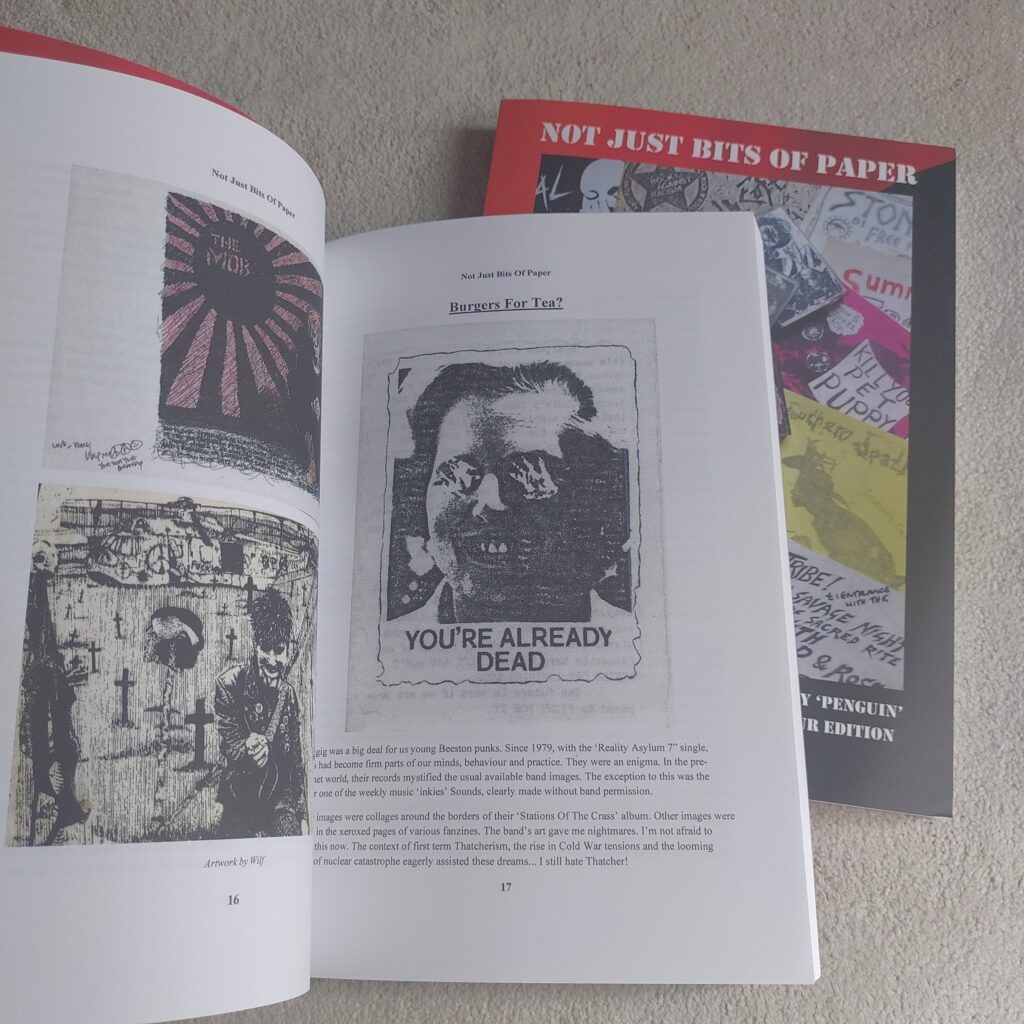
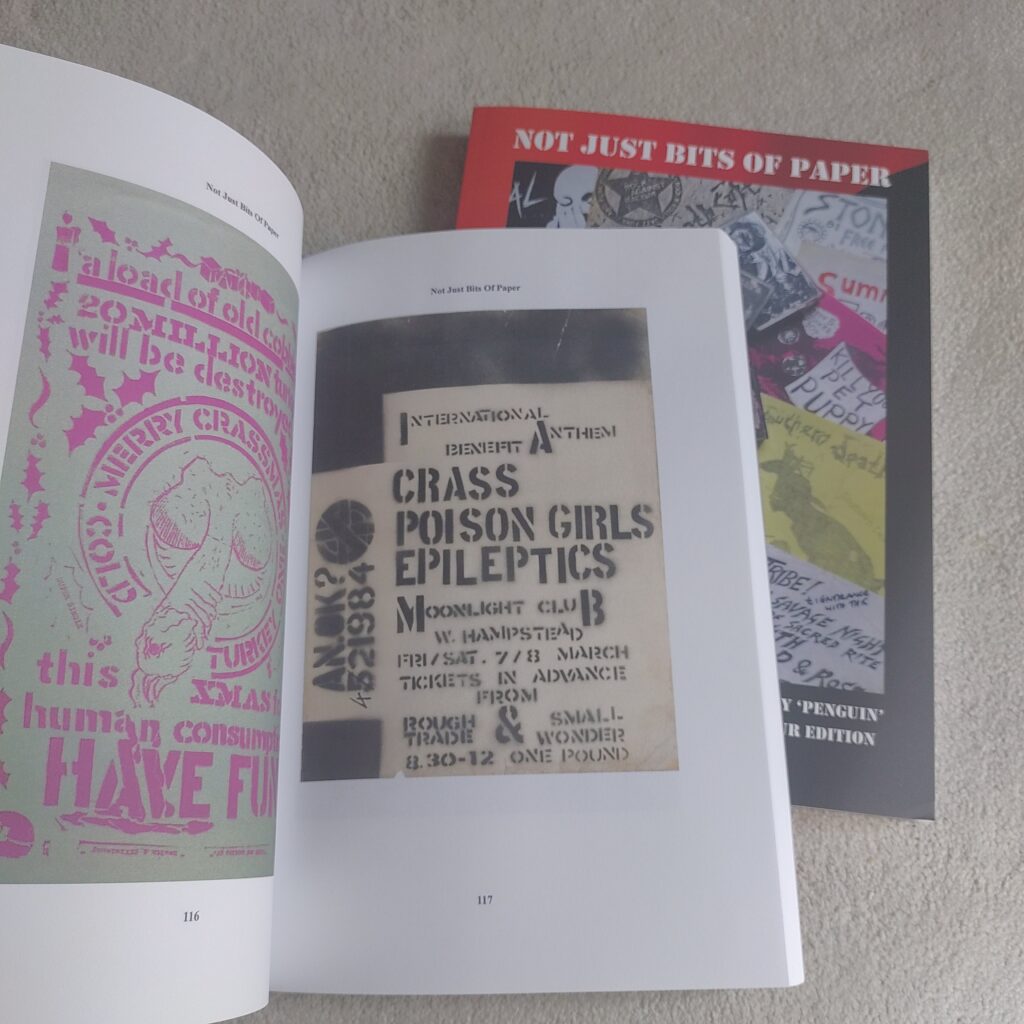
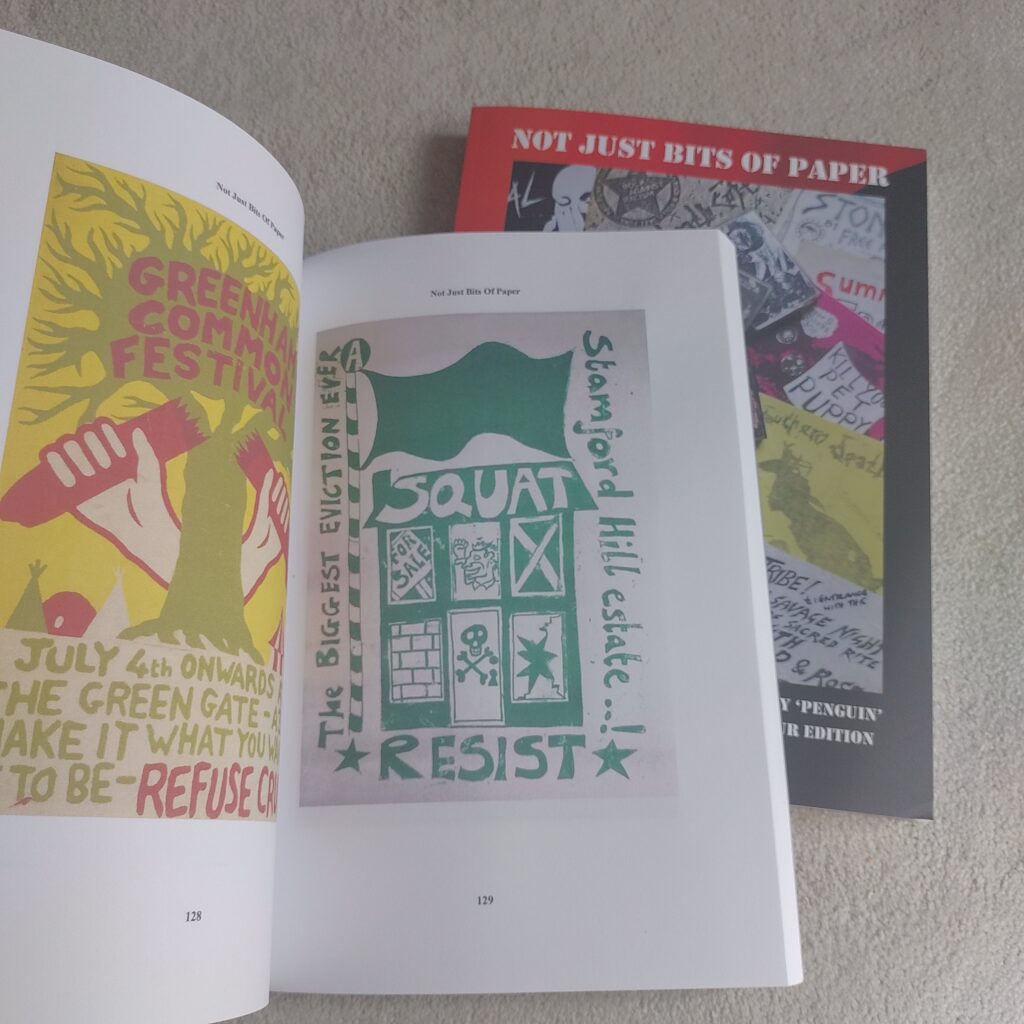
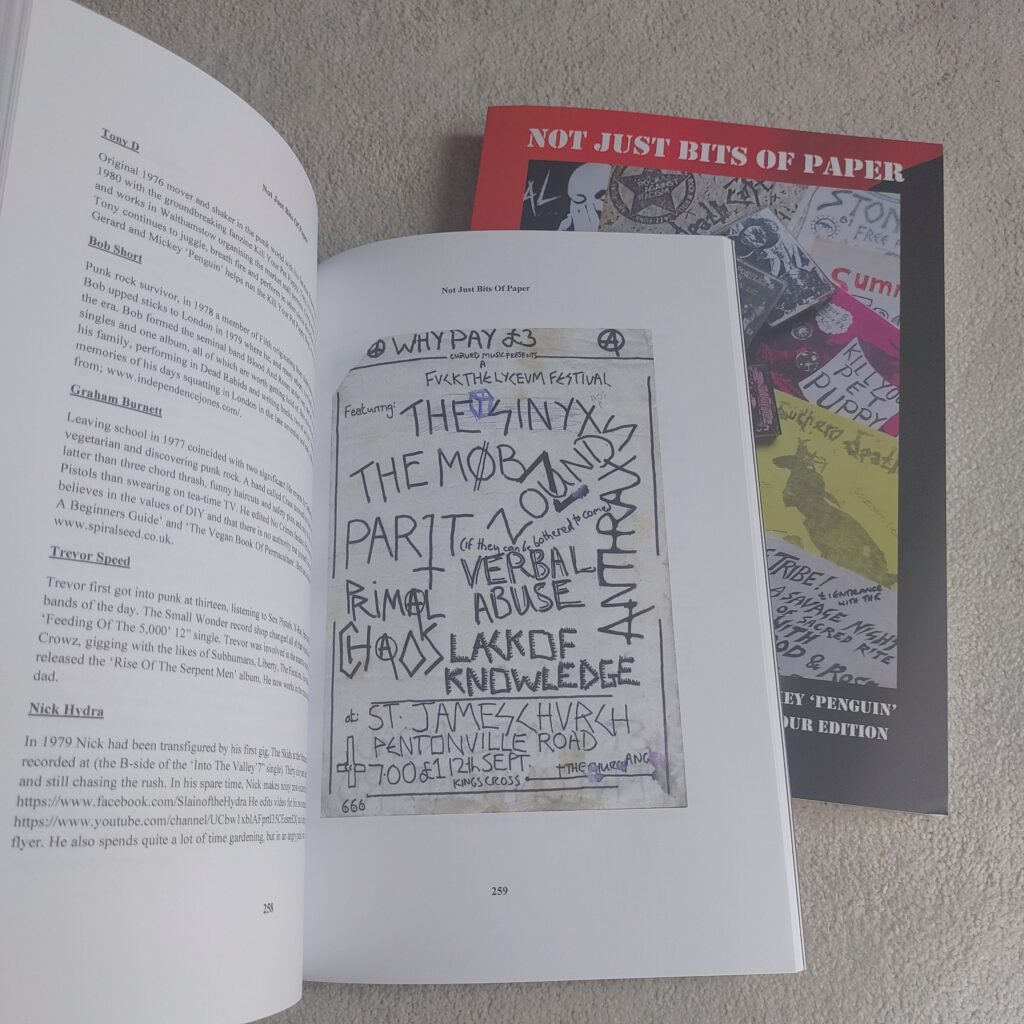
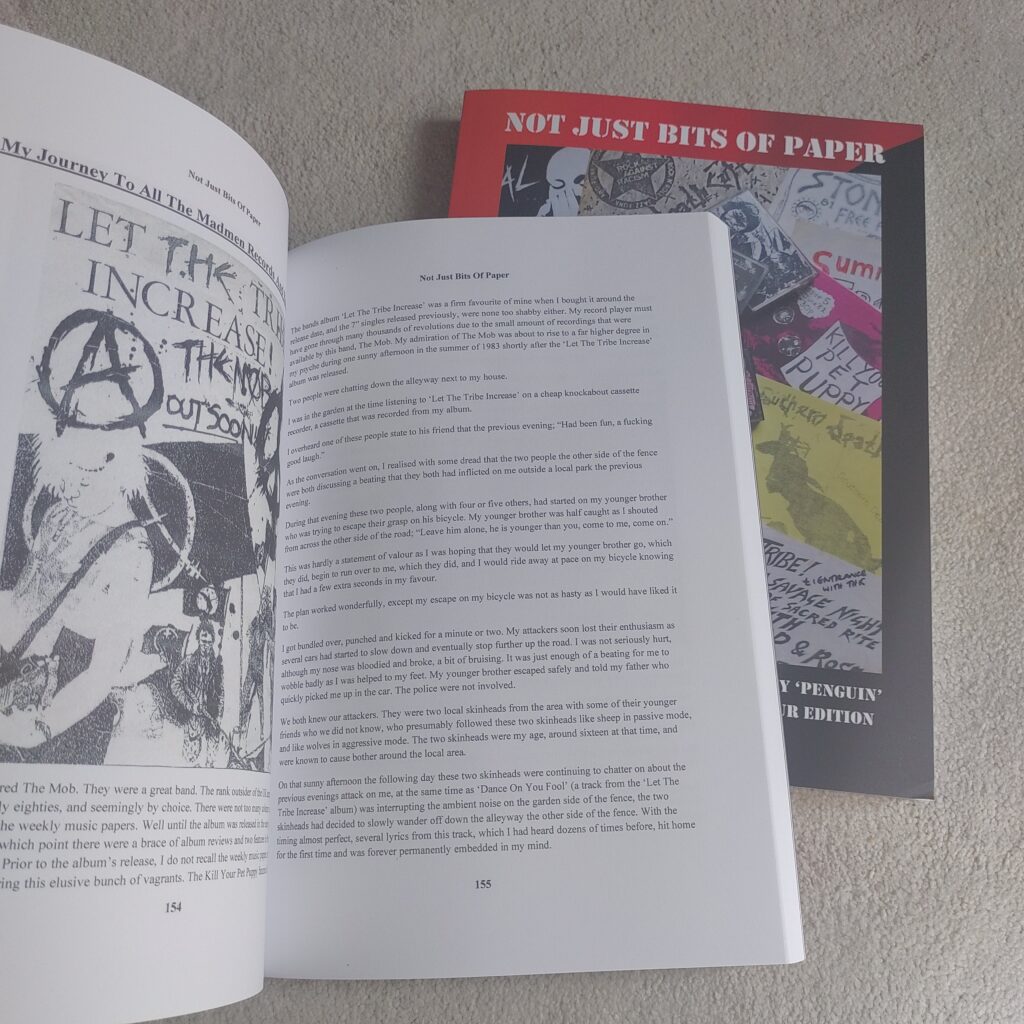
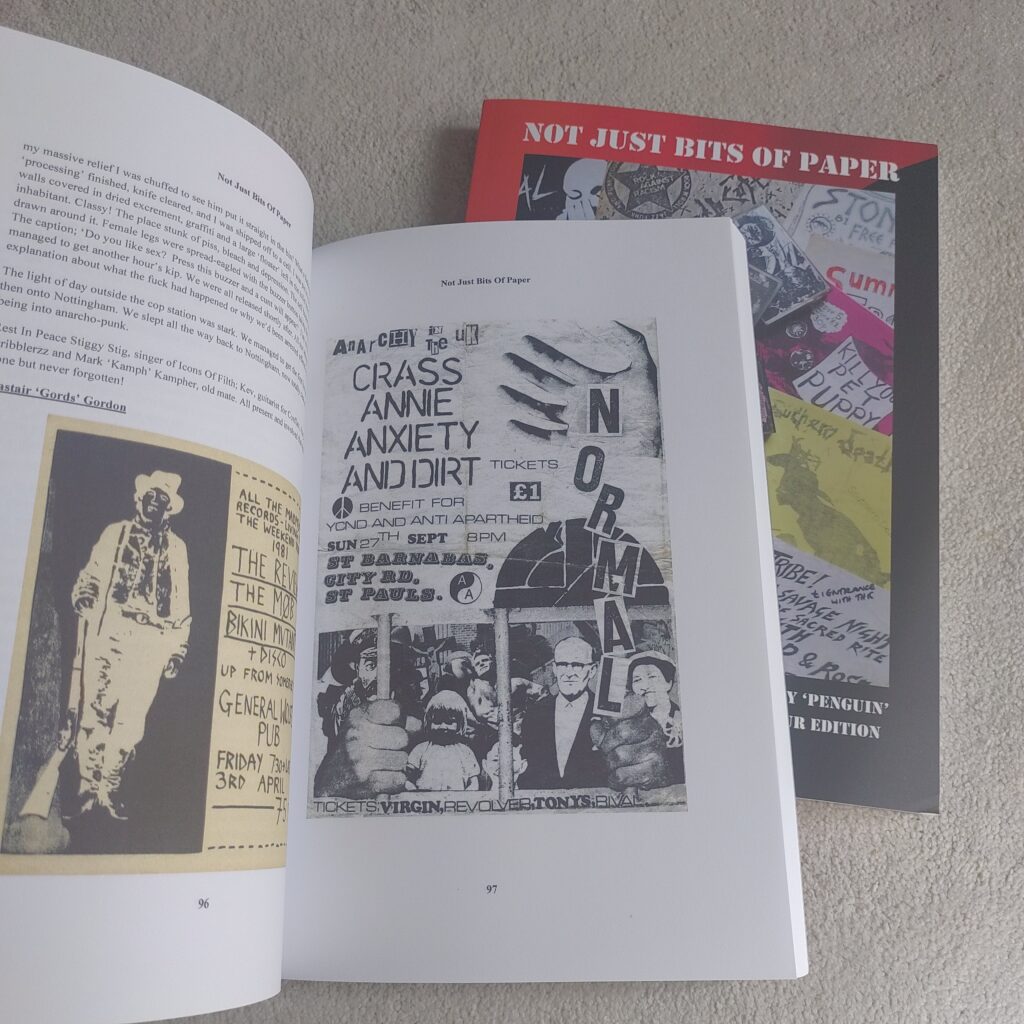
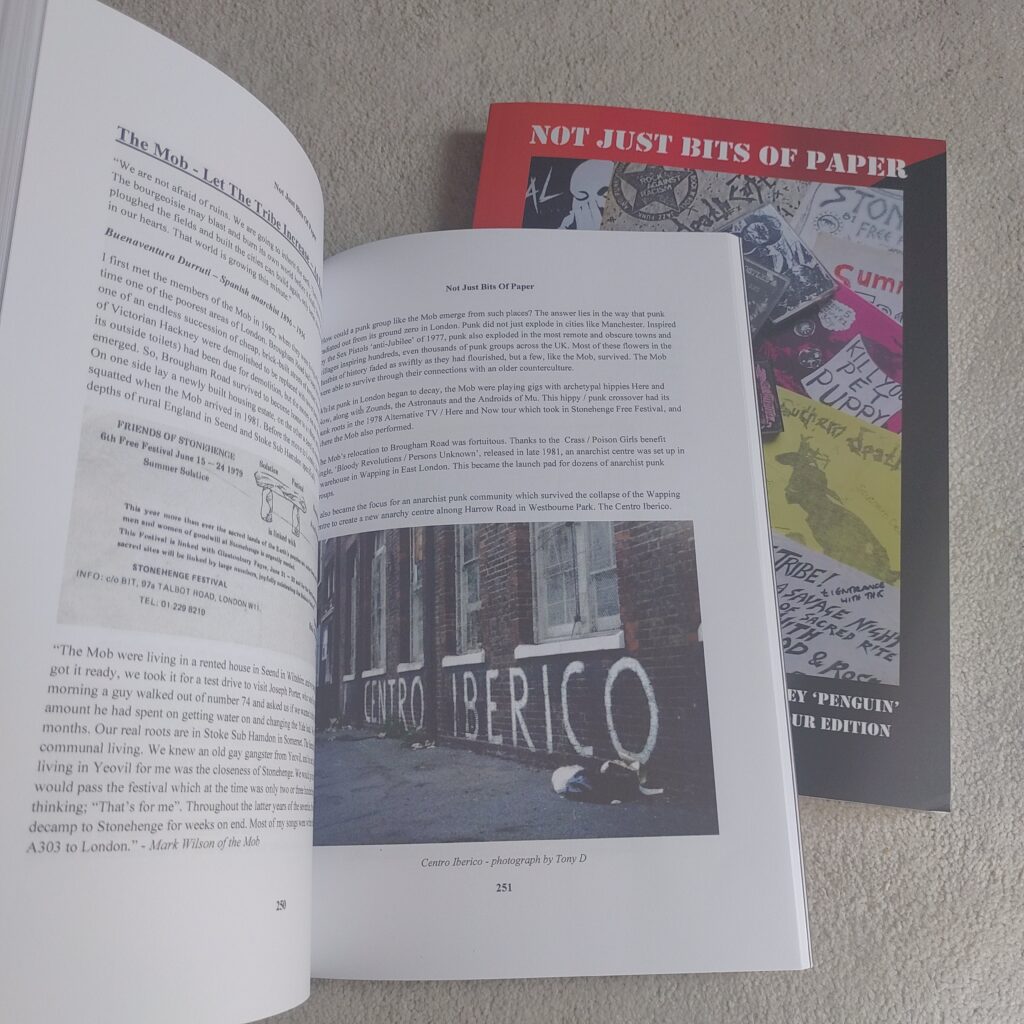
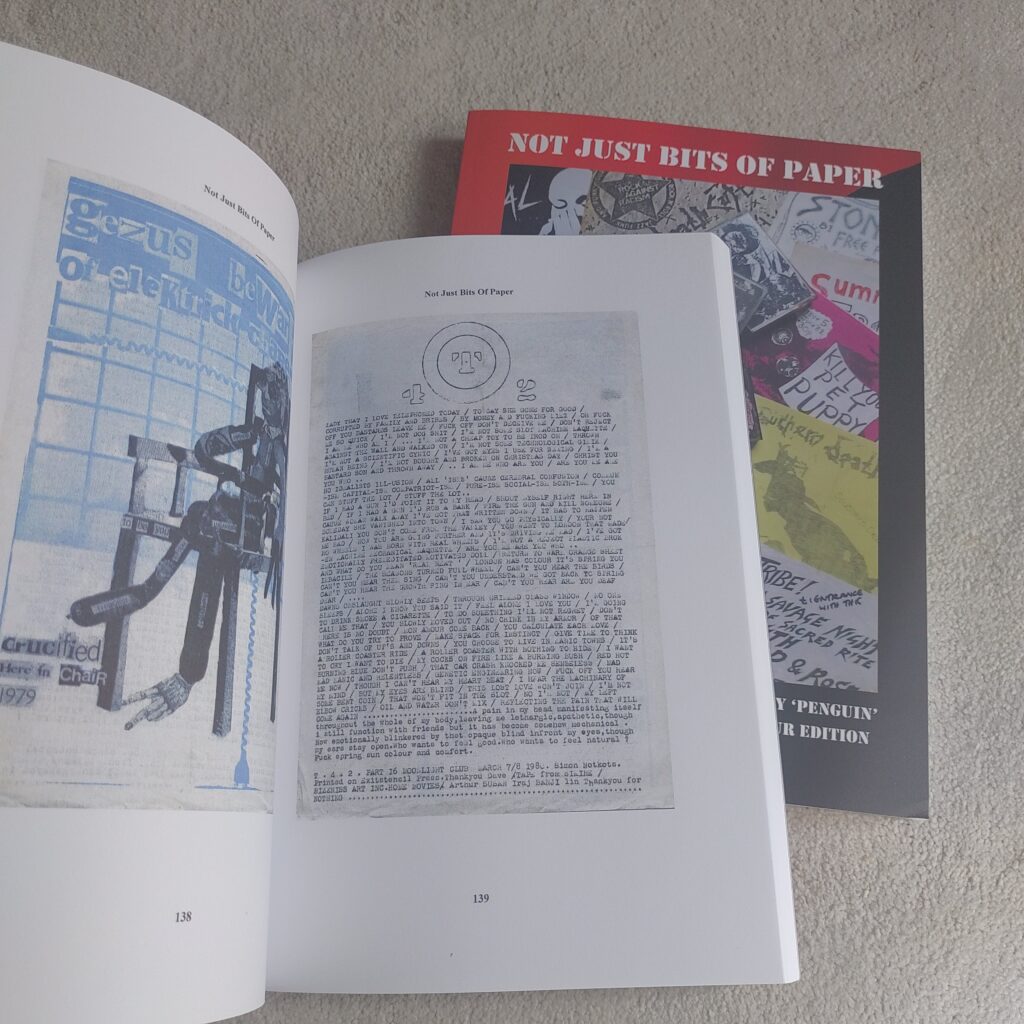
Kev
February 27, 2025 at 9:09 pmJust got a copy of the updated version of the book. Fuck me, it’s excellent, really beautiful. I was only born in 80 so too young for the early anarcho years, but I suppose I’ve been a punk since I was about 12 or 13 in the early 90’s & grew up going to see bands like P.A.I.N & Inner Terrestrials regularly in London in squats, boozers, free festivals etc & even on a fucking boat once. They turned me onto the older stuff like Subhumans, Peni and loads more & I’ve always loved the look of the early 80’s scene, wish I’d been there, then again I enjoyed the scene I grew up in and there’s no point wishing anyway. I’m babbling, but well done to all involved in this wonderful book. I’m listening to Death Church really loud as I write this and flicking through the book.
Penguin • Post Author •
February 28, 2025 at 10:59 pmThank you Kevin. Your comment made my day! I always felt the same about not being quite old enough for 76/77. 1979 when I first started to collect records (at a young age), and 81 when I started to go to punk gigs etc, I was always in awe of people that were around a few years earlier. BUT you were also around in the nineties (at a young age too), and before long, other people would be saying that they were too young in the nineties, and they wished that they could experience the squats and the gigs of your generation. Before long that generation will also be looking back, and it continues. You were part of your scene and I hope you learned from that scene. Your memories are just as important, and should be celebrated also. The one thing that the seventies, eighties and nineties had though, that could not to be replicated in a large scale are flyers and posters to advertise forthcoming records or gigs! Which brings me back to the book! Thank you again.
Kev
March 6, 2025 at 9:03 pmHi Mickey,
Yes I guess everyone has something they think they missed out on, but like you say, I enjoyed my youth and the scene I grew up in and it all goes on & on. It definitely changed my life from a young age and I am still the same and still feel the same. I don’t see that ever changing. Punk music, moral code is such a powerful thing, I really don’t think there’s anything quite like it. It’s a beautiful thing & never really understood the friends that fell by the wayside, so to speak. I guess they had their reasons but personally I’ve never had a choice, I couldn’t separate myself from it if I wanted to!
And not to blow smoke, but I actually just last night finished reading your chapter of the book and thought it was a really wonderful story, your life in the scene and how you started by helping Madmen & carrying on to live and do what you wanted, overcoming your illness in your younger years etc. That really moved me and has been my favourite chapter of the book so far. I had no idea it was you I was talking to either!
I hope you are keeping well. Thanks for writing back to me.
Kev
Penguin • Post Author •
March 7, 2025 at 10:15 pmAwww thank you again Kev for those lovely words! And thank you for the compliment re; my chapter. Other amazing chapters are from Rich Cross, Chris Low, Stringy and Tim Voss, but there is so many great chapters, all of Greg Bull’s for instance. Thank you for being so positive about the book! Wishing you all the best.
Kevin Harris
March 8, 2025 at 8:47 amYes, the entire book is excellent, full of amazing stories of a wonderful movement. So glad I found it & great to talk to you.
Thanks Mickey, take care
Penguin • Post Author •
April 3, 2025 at 1:56 pmThank you again Kevin I’m so glad you enjoyed flicking through the book!
Gershwin
April 23, 2025 at 3:15 pmNot sure where to leave this comment. Here will do.
Does anyone remember Todd aka Skunk. He’s in one of the Autonomy Centre photos. Came from Hackney, at least that’s where we visited him at his parents house once.
His dad was editor of the Daily Mirror, or suchlike. Though, as was the order of the day, that was probably kept very quiet 😉
Skunk, I recall, was so-named as he kept a sock permanently in one of his boots.
He sang for a band called Heir Attack with Stewart on drums, Nick on guitar and Chris on bass. All, bar Skunk, were from Ealing. They played one gig at the Centro Iberico. Think it was supporting DIRT and a few others.
Long forgotten days. Still recall Skunk, Stewart and myself being put on guard at the downstairs doors at the Autonomy Centre when the BM were rumoured to be visiting.
Is my memory playing tricks, does anyone recall that night? We just managed to close the doors in time – when we heard the calls from upstairs, where others lobbed ‘objects’ down at the skins from the warehouse freight door.
Took the police hours to turn up and clear the Wharf below.
Hello Todd, if you’re out there, hope you’re doing well.
Penguin • Post Author •
April 25, 2025 at 4:22 pmHiya Gershwin. Are you asking about Tod who was the vocalist of Flack? If you are he is an artist dealing in large art installations. Search this website name for his website.
todhanson.com
If you are not asking about that Tod then I do not know. Maybe someone else will be able to help if they see this message thread.
Gershwin
April 25, 2025 at 8:54 pmThanks Penguin. Appreciate the reply,
Maybe I’m muddling up his first name, not Todd from Flack. Heir Attack were snort lived, the one support at Centro was their only gig. Though many a Saturday afternoon was spent drunk on Carling and Merrydown snakebites listening to them rehearse in Chris’s bedroom.
Here’s the chap I meant from the photos here on this site. I know he knew some of you Puppy people, but don’t think he was inner circle (for want of a better phrase).
https://photobucket.com/share/63cbd5ec-49ae-40cb-a97d-ff28c07468de/media/536af54f-6d55-4935-9dbc-6a7b7b6eee6e
Gershwin
April 25, 2025 at 9:01 pmAh, darn that link seems to not work. Can see the pic via Wapping Autonomy Centre link in photographs on this site.
He’s in the photo after the one of the punkette with a big pink mohican.
Skunk is the guy sitting on the bog, with short’ish curly brown hair and the left lapel on his leather jacket painted white.